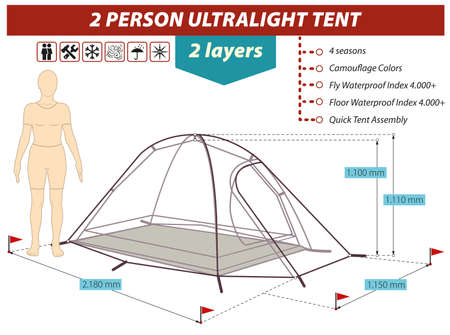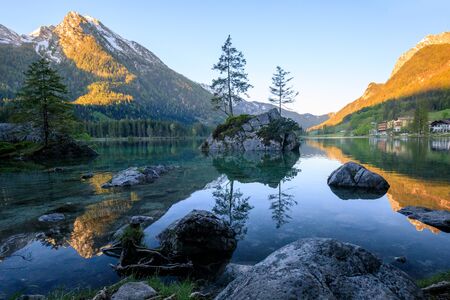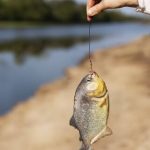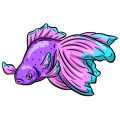1. Choosing the Right Tent and Shelter
When youre planning the ultimate camping and fishing combo trip, your tent and shelter are more than just a place to crash—theyre your basecamp for all the action. Picking the right setup can mean the difference between an epic adventure and a soggy, uncomfortable mess. Here’s how to choose gear that stands up to America’s diverse weather and keeps you comfortable by the water.
Key Factors to Consider
- Weather Resistance: Look for tents with solid waterproof ratings (at least 1500mm) and sturdy poles that can handle wind, rain, or even a surprise summer storm.
- Size & Weight: Balance comfort with portability. If you’re hiking into your fishing spot, go light. Car campers can afford roomier options.
- Setup Time: After a long day on the lake, nobody wants a complicated tent. Pop-up and instant tents are lifesavers when you’re tired or racing against sunset.
- Ventilation: Good airflow is crucial—especially near lakes or rivers where bugs thrive. Mesh windows and vents help keep things cool (and less buggy).
- Mudroom/Storage: Extra vestibule space lets you stash wet fishing boots, rods, and tackle outside your sleeping area.
Tent & Shelter Types at a Glance
| Tent Type | Best For | Main Pros | Main Cons |
|---|---|---|---|
| Dome Tents | General camping/fishing trips | Easy setup, good in wind/rain | Limited headroom, smaller vestibules |
| Cabin Tents | Larger groups/families by lakesides | Spacious, tall enough to stand in | Heavier, less stable in strong winds |
| Bivy Sacks/Tarps | Solo anglers, lightweight hikes | Super portable, fast setup | Minimal comfort/features, best for fair weather only |
| Screen Shelters | PICNIC AREAS/BUGGY LOCATIONS | Keeps insects out while you prep gear/eat meals by the water | No sleeping space, not for overnight shelter alone |
Pro Tips from American Campers & Anglers:
- Always bring an extra tarp—it doubles as a groundsheet or rainfly if weather gets wild.
- If you’re camping near water, pick higher ground for your tent site to avoid waking up in a puddle.
- A freestanding tent makes it easier to move camp if you find a better fishing hole nearby.
Your Shelter = Your Headquarters
The right tent or shelter lets you rest easy after landing big catches or trekking through trails. Invest in something durable and tailored to both your group size and local conditions—because when Mother Nature throws curveballs, you’ll want your basecamp ready for anything.
2. Sleeping Systems for Comfort and Warmth
When youre out camping and fishing, a good nights sleep can make all the difference. The right sleeping gear ensures you stay warm, comfortable, and ready to tackle another day in the wild. Let’s break down what you’ll need to set up a cozy outdoor sleeping system:
Essential Sleeping Gear for Your Adventure
| Gear | Main Purpose | Key Features | Why It Matters |
|---|---|---|---|
| Sleeping Bag | Keeps you warm at night | Insulated, temperature-rated, easy to pack | Prevents hypothermia and keeps you comfy even if temps drop |
| Sleeping Pad | Adds cushioning and insulation from ground | Inflatable or foam, lightweight, compact | Makes rocky campsites tolerable and helps retain body heat |
| Campsite Blanket | Extra warmth or outdoor lounging | Packs small, quick-drying, multi-use | Perfect for chilly mornings or wrapping up by the fire after fishing |
| Pillow or Stuff Sack Pillow | Supports your head and neck | Packs small, lightweight, washable cover | No more using bundled-up clothes as a pillow—get real rest! |
Tips for Choosing the Right Sleeping System
- Check Temperature Ratings: Always pick a sleeping bag rated for colder than the lowest expected temp—nights can get chilly even in summer.
- Consider Packability: If you’re hiking to your campsite, go for lightweight and compressible gear.
- Layer Up: Using a blanket over your sleeping bag adds flexibility if conditions change.
- Water-Resistant Materials: Look for water-resistant or quick-drying fabrics to handle morning dew or unexpected rain.
- Test Before You Go: Set up your sleeping system at home first so there are no surprises on your trip.
The American Camping Comfort Standard: Warmth Meets Practicality
A solid sleeping setup is more than just comfort—its about waking up refreshed so you can enjoy early morning fishing or late-night campfire stories. Whether you’re car camping at a lake in Colorado or pitching a tent by a river in Oregon, having reliable sleeping gear is essential for every camper-fisher combo experience.

3. Cooking and Food Storage Solutions
When you’re out camping and fishing, having the right gear for cooking and keeping your food fresh can make or break your experience. A reliable stove, a solid cooler, and proper storage solutions help you prepare hearty meals after a long day by the water—without worrying about spoiled food or complicated setups. Here’s what you need to know to keep mealtime simple and safe at camp.
Recommended Camping Stoves
Choosing the best camping stove depends on your group size and cooking style. For most campers and anglers, portability, fuel efficiency, and ease of use are top priorities. Here are some popular options:
| Stove Type | Best For | Key Features |
|---|---|---|
| Propane Two-Burner Stove | Family/group camps | Sturdy, adjustable flame, easy to find fuel |
| Single Burner Backpacking Stove | Solo or minimalist trips | Ultra-lightweight, compact, quick boil times |
| Wood-Burning Camp Stove | Off-grid/eco-conscious campers | No fuel canisters needed, uses found wood, smokeless models available |
Coolers That Keep Your Catch & Meals Fresh
A quality cooler is a must-have for any camping and fishing combo adventure. It keeps your food safe from spoilage and your drinks ice-cold after a hot day on the lake. Here are a few standout choices:
- Hard-Sided Coolers: Known for durability and long ice retention (Yeti, Coleman Xtreme).
- Soft-Sided Coolers: Great for short trips or limited space (RTIC Soft Pack).
- Electric Coolers: Plug into your car for longer adventures or if you hate dealing with ice (Dometic CFX Series).
Food-Safe Storage Tips & Gear
You don’t want critters raiding your snacks or bacteria spoiling your catch. Use these smart storage solutions to keep things organized and safe:
- Airtight Containers: Keep leftovers fresh and prevent spills in your pack.
- Bears & Critter-Proof Canisters: Required in many U.S. parks—keeps wildlife away from your campsite food.
- Ziploc Bags & Dry Bags: Perfect for marinating fish or protecting dry goods from moisture.
- Campsite Hanging Systems: Hang food bags from trees using a bear hang if you’re deep in the woods.
Packing Checklist: Cooking & Food Storage Essentials
| Item | Description/Tip |
|---|---|
| Camping Stove + Fuel | Main heat source for meals; pack extra fuel just in case. |
| Cooler with Ice Packs | Keeps perishables cold; pre-chill for best results. |
| Airtight Food Containers/Bags | Avoids cross-contamination; stackable options save space. |
| Bearing-Resistant Canister (if needed) | Makes you compliant with park rules and safer from wildlife. |
| Lighter & Waterproof Matches | You can never have too many fire-starting backups. |
| Pots, Pans & Utensils | Select lightweight, nestable sets made for camp use. |
| Campsite Table/Prep Surface (optional) | Makes meal prep easier and cleaner if you have the space. |
4. Must-Have Fishing Gear
Fishing Rods: Finding the Right Fit
When it comes to fishing across America’s diverse waters, choosing the right rod can make all the difference. For lake and pond fishing, a medium-action spinning rod is versatile and beginner-friendly. If you’re heading to rivers or streams for trout, a lightweight spinning or fly rod is ideal. Planning on saltwater adventures along the coast? Go for a heavy-duty rod built for larger fish like redfish or striped bass.
| Fishing Spot | Recommended Rod | Key Features |
|---|---|---|
| Lakes & Ponds | Medium Spinning Rod (6-7 ft) | Versatile, easy casting, good for bass & panfish |
| Rivers & Streams | Light Spinning/Fly Rod (5-6 ft) | Sensitive tip, perfect for trout and smallmouth bass |
| Saltwater/Coastal | Heavy Spinning/Casting Rod (7-9 ft) | Stronger backbone, handles bigger fish, corrosion resistant |
Tackle: Covering All Your Bases
Your tackle box should be packed with essentials tailored to your target catch and location. Here are some must-haves:
- Hooks: Assorted sizes from #10 (small) to 1/0 (large)
- Sinkers: Split shot and egg sinkers for various water conditions
- Lures: Crankbaits, spinners, soft plastics, topwater frogs – match them to local species
- Bobbers: Useful for keeping bait at the right depth and easy strike detection
- Pliers: For hook removal and quick fixes on the go
- Tackle box organizer: Keeps gear tidy and accessible so you can focus on fishing, not searching for lures
Bait: Live vs Artificial Options
The best bait often depends on your location and what’s biting. In most American fishing spots, these choices work well:
| Bait Type | Best For | Common Locations |
|---|---|---|
| Nightcrawlers/Worms | Panfish, Bass, Trout | Lakes, Rivers, Streams Nationwide |
| Minnows/Shad | Bass, Catfish, Walleye | Lakes and Larger Rivers in Midwest & South |
| Corn/Dough Bait | Carp, Catfish | Ponds & Slow-Moving Rivers in Northeast & Midwest |
| Artificial Lures (Crankbaits/Spinners) | Bass, Pike, Trout, Redfish | Lakes, Rivers, Coastal Waters Across U.S. |
| Shrimp/Cut Bait | Saltwater Species (Redfish, Snapper) | Southeast & Gulf Coast Shores/Piers |
Personal Fishing Accessories You Shouldn’t Forget
- Tackle Bag or Backpack: Easy to carry between camp and fishing spots
- Polarized Sunglasses: Cuts glare so you can spot fish easier
- Sunscreen & Bug Spray: Protect yourself from sunburns and pesky mosquitoes
- Multi-tool or Knife: Handy for cutting line or prepping bait
- Fishing License: Make sure you’re legal before casting out – requirements vary by state
- Fishing Hat & Lightweight Gloves: Stay comfortable in changing weather conditions
- Cup or Small Bucket: Perfect for holding live bait or a quick hand wash by the shore
- Pocket First Aid Kit: Just in case of minor scrapes or hooks that get away from you
The Bottom Line on Essential Fishing Gear for Your Next Adventure
No matter where you set up camp—by a lake in Michigan, a river in Colorado, or the sunny Florida coast—having the right fishing gear makes all the difference. With the essentials above packed and ready to go, you’ll be prepped for an unforgettable camping and fishing combo experience anywhere in the USA.
5. Safety and Navigation Tools
When youre planning the ultimate camping and fishing combo trip, staying safe and knowing where you are at all times is key. Whether youre deep in the woods or near a remote lake, having the right safety and navigation tools can make all the difference. Lets break down the must-have items you should always pack for peace of mind and a smooth adventure.
Must-Have Safety and Navigation Gear
| Item | Why You Need It |
|---|---|
| Reliable Flashlight or Headlamp | Essential for moving around safely after dark, finding your way to the tent, or checking your fishing gear at night. Go for LED models with long battery life. |
| Extra Batteries | Always pack spares—dead batteries in the middle of nowhere are a real headache. |
| Map of the Area | Packed GPS is great, but a physical map never runs out of battery. It’s a backup if electronics fail. |
| Compass | Works with your map to help you navigate unfamiliar trails or lakesides. Simple, reliable, no signal required. |
| First Aid Kit | For those unexpected scrapes, cuts, or minor accidents that can happen while hiking or fishing. Make sure it’s well-stocked! |
| Whistle | If you get lost, a loud whistle can help others find you faster than shouting. |
| Fire Starter (Matches/Lighter) | Needed for warmth, signaling, or emergencies when you need to start a fire quickly. |
| Emergency Blanket | Tiny to pack, but big on warmth if weather turns rough unexpectedly. |
Quick Tips for Using Your Safety and Navigation Tools
- Test Your Gear: Before heading out, make sure flashlights work and your compass points true north.
- Keep Essentials Handy: Don’t bury these items at the bottom of your pack—keep them within easy reach.
- Know How to Use Them: Spend some time learning how to read your map and compass together. Practice basic first aid skills too.
- Create a Buddy System: Always let someone know your route and expected return time before heading out into remote areas.
Stay Prepared, Stay Confident
Packing these safety and navigation essentials helps ensure that your camping and fishing combo is not only fun but also safe. With the right gear on hand, youll be ready to tackle whatever nature throws your way—and focus on making great memories outdoors!
6. Clothing and Personal Essentials
When you’re out camping and fishing, what you wear can make or break your adventure. The right clothing and personal essentials keep you comfortable, safe, and ready for anything Mother Nature throws your way. Here’s what you need to know:
Weather-Appropriate Clothing
Layering is the secret sauce for outdoor comfort. Mornings and nights can be chilly, even in summer, but afternoons might get hot fast. Follow the three-layer system:
| Layer | Purpose | Examples |
|---|---|---|
| Base Layer | Wicks sweat away from your skin | Moisture-wicking T-shirt, long underwear |
| Mid Layer | Keeps you warm | Fleece jacket, hoodie, insulated vest |
| Outer Layer | Protects from wind/rain | Waterproof shell, rain jacket, windbreaker |
Avoid cotton—once it gets wet, it stays wet. Choose synthetic or wool materials for better comfort and faster drying.
The Right Boots Matter
Your feet will take you everywhere—don’t let them slow you down. Opt for waterproof hiking boots if you’ll be trekking through muddy trails or along riverbanks. For fishing near water or on boats, slip-resistant water shoes are a solid pick. Always bring extra socks (preferably wool or synthetic) to keep your feet dry and blister-free.
Bug Protection is a Must
Bugs love the outdoors just as much as we do. Protect yourself with these essentials:
- Insect Repellent: Go for EPA-approved repellents containing DEET or picaridin.
- Bug-Repellent Clothing: Some shirts and pants come pre-treated with permethrin for added protection.
- Mosquito Head Net: A lifesaver during peak mosquito season or in dense woods.
- Tent Screens: Make sure your tent has good mesh screens to keep bugs out at night.
Packing Checklist for Clothing & Personal Essentials
| Item | Why You Need It |
|---|---|
| Weather-appropriate layers (base/mid/outer) | Stay comfortable in changing temps |
| Waterproof hiking boots / water shoes | Dry, protected feet wherever you roam |
| Socks (wool/synthetic) | No more blisters or cold feet! |
| Sunglasses & Hat | Shield from sun glare and UV rays |
| Insect repellent & bug spray | No bites = happy camper/fisherman |
| Mosquito head net / bug-proof clothing | Avoid those itchy bites altogether |
| Sunscreen & lip balm with SPF | Sun safety is key outdoors |
| Personal hygiene items (toothbrush, wipes) | A little comfort goes a long way after a long day outside! |
Dressing smart keeps you focused on enjoying the wild instead of worrying about the elements. With the right gear, youll be ready to cast a line or set up camp anywhere the adventure takes you.


